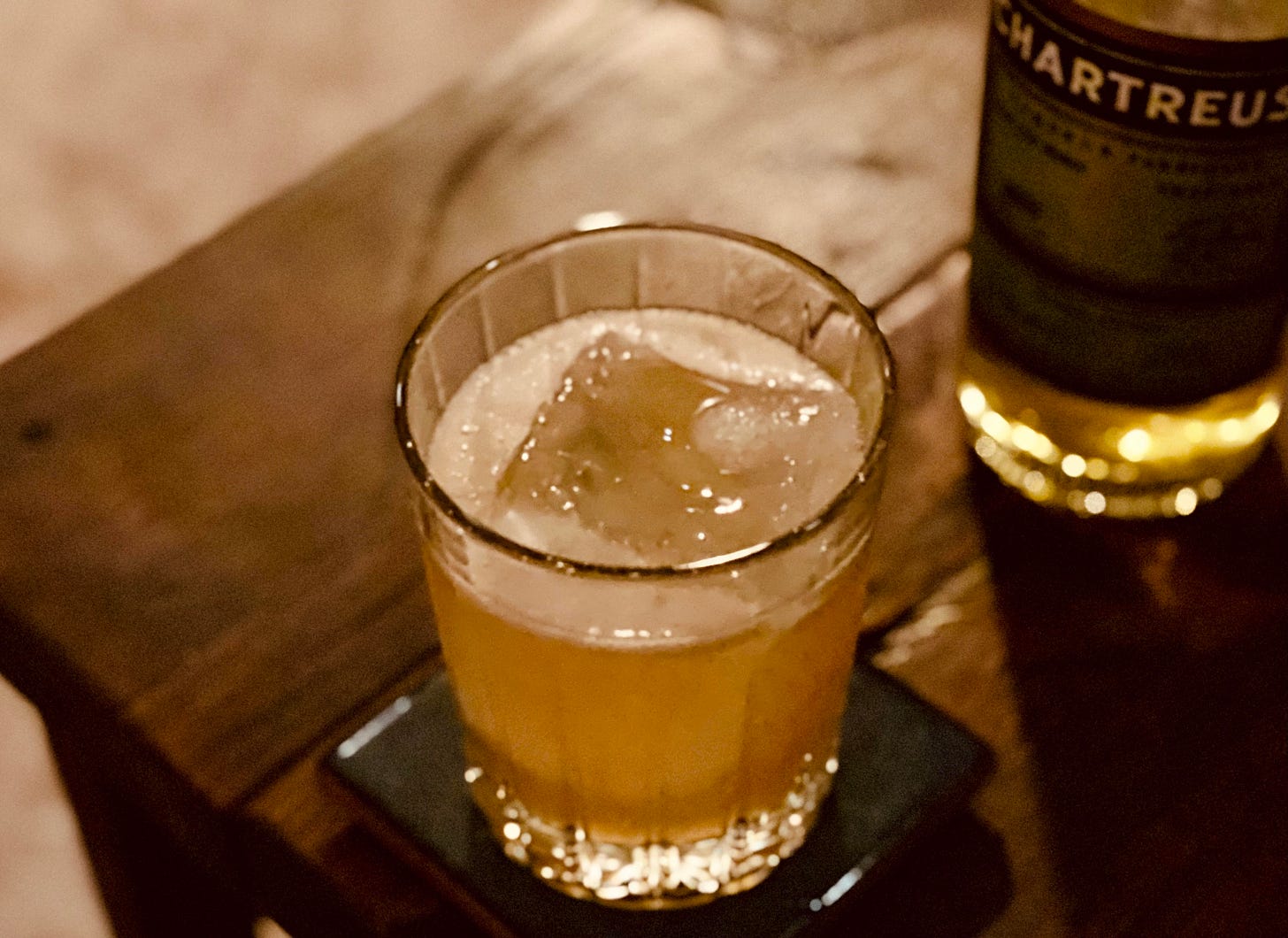Perhaps the easiest way to transform a Whiskey Sour is to add an extra, intensely flavored ingredient to the mix — typically something sweet, often but not always fruity. The presence of this extra ingredient, which might come in a proportion as large as an ounce or as small as a single teaspoon, transforms a simple Whiskey Sour into a different class of cocktail known as the Daisy.
Adding a flavor modifier like this is a consistently useful technique for modifying a cocktail, and it works particularly well with Whiskey Sour-class drinks. Daisies modified with herbal liqueurs, meanwhile, make great sippers for cool fall nights as darkness begins to arrive early.
So today, we’re going to look at some historical and contemporary recipes for the Whiskey Daisy, which show how the drink has evolved over time. And then, at the end, I’ll show you how I like to make this drink.
The Daisy Resembles a Lot of Other Drinks
Like all iconic cocktails, the Daisy is best understood as a template: Search for Whiskey Daisy recipes and you’ll find a wide variety of specs, some great, some good, some not worth discussing. The Daisy has evolved over time, and part of what’s interesting about this template is how varied the recipes are, with additions of grenadine, Cointreau, orgeat, and even the historically appropriate yellow Chartreuse. Yet nearly all of them follow a standard pattern: a whiskey base, some lemon juice, some sort of syrup — essentially a Whiskey Sour — and then something else. That “something else,” whatever it turns out to be, is what makes a Daisy a Daisy. It’s what gives the drink its Daisy-ness.
Structurally, the Daisy resembles several drinks we’ve already covered even beyond the Whiskey Sour: In the same way that a tiki drink is a rum sour plus spice, a Whiskey Daisy is a Whiskey Sour plus some other strongly flavored ingredient. In a sense, a Mai Tai, which takes the Daiquiri’s rum sour template and adds orange liqueur and nut syrup, is a kind of a Rum Daisy. Similarly, a lot of Whiskey Daisies also end up looking a lot like Dick Bradsell’s Bramble — a modern classic that is really just a gin sour or gin fix topped with a sweet, fruity liqueur.



